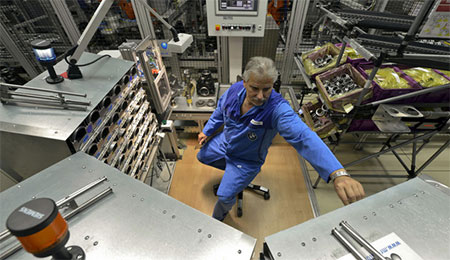
 The conclusion of a new study of mice showing that blindness improves hearing and deafness improves vision wasn't as surprising as the fact that the result was observed in older mice. This has relevance for human learning. Grown-up brains of all kinds aren't supposed to have the plasticity necessary for the type of adaptive learning the blind and deaf mice displayed.
The conclusion of a new study of mice showing that blindness improves hearing and deafness improves vision wasn't as surprising as the fact that the result was observed in older mice. This has relevance for human learning. Grown-up brains of all kinds aren't supposed to have the plasticity necessary for the type of adaptive learning the blind and deaf mice displayed.
The study, published online in the journal Neuron, adds to growing evidence, most of it based on human research, challenging the notion that old dogs can't learn new tricks. This work has enormous consequences for the millions of aging workers in industrialized countries who, lacking sufficient retirement resources, will have to work longer than any previous generation. To do so profitably in the increasingly technological workplace, they will need to master new skills.
Currently, older workers are underserved by work-training programs. Employers provide workers aged 25 to 34 with an average of 35 hours a year of training while those 55 and older get nine hours, according to one study. Mature employees may not require lessons on basic business practices but do need to be as familiar with technology as their younger associates.
The idea that such training is wasted on older workers doesn't hold up to recent research. This body of work suggests it's the way the young learn that makes them better at it rather than that they have more flexible brains. For instance, students in school settings are constantly quizzed, unlike adults trying to master a subject on their own, and testing greatly improves recall. Older people tend to strive for immediate perfection; the young are more willing to risk mistakes, an important learning tool. Learning is boosted by confidence, for which the young generally have the edge.
These findings suggest that older workers would benefit from adjustments in training programs such as the incorporation of regular testing, establishment of a climate for risk-taking, and special encouragement to build confidence. Employers who made such changes would then have workers who were both up-to-date on their skills and offered the existing advantages of older workers, including low rates of absenteeism, loyalty and maturity.

 Previous page
Previous page Back to top
Back to top







